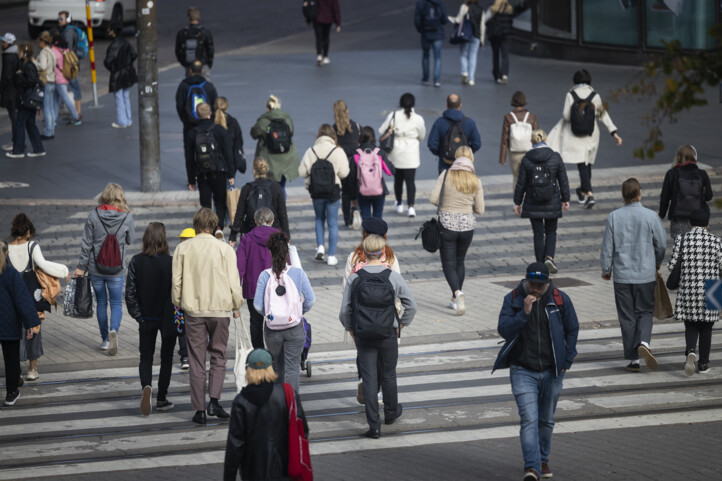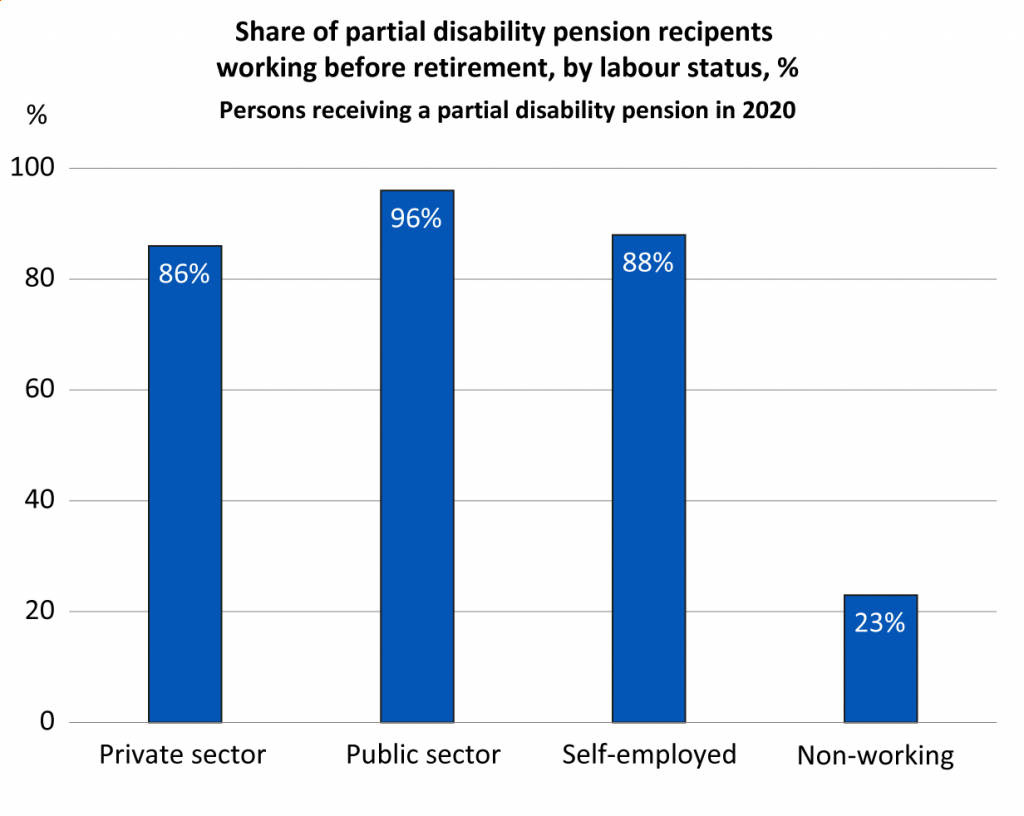Most persons who draw a partial disabilty pension work – their income is clearly higher than that of persons outside the labour force

A majority of the recipients of a partial disability pension work throughout the entire period of receiving the pension. Public sector employees work more often than do private sector employees or the self-employed. However, every fifth partial disability pension recipient is outside the labour force, as is revealed by a recent research article by the Finnish Centre for Pensions.
Most partial disability pension recipients are older working-age people and women, and nearly half of them have retired from the public sector. These groups also work more often alongside the partial old-age pension.
“When it comes to working, the differences in educational level are large: those with a higher education work more often while drawing a partial disability pension than do those with a lower education. On the other hand, those with a higher education spend a shorter time on the partial disability pension than do those with a lower education,” says Senior Researcher Anu Polvinen (Finnish Centre for Pensions).

Significant gap in income between the working and the non-working disability pension recipients
In 2020, the average annual net income of partial disability pensioners was 27,000 euros, but the fluctuation was considerable. The net annual income of non-working partial disability pensioners was around 16,800 euros, which is nearly 40 per cent lower than that of working partial disability pensioners.
“The purpose or intent of the partial old-age pension is that its recipients can work while receiving the pension. Although this goal has been met, every fifth recipient of the partial disability pension is outside the labour force,” explains Economist Juha Rantala (Finnish Centre for Pensions).
Combining work and pension is financially profitable
Combining paid work with a partial disability pension is nearly always a financially more profitable alternative than drawing a full disability pension. For the majority, combining work and the partial disability pension meant an income that was 20–80 per cent higher than for those on a full disability pension in 2020.
The research article was published (in Finnish) in the labour policy review Työpoliittinen aikakauskirja.
In 2022, around 5,400 persons took out a partial disability pension. At the end of the year, partial disability pension recipients numbered 17,700 persons.
Partial disability pension recipients:
- Nearly 70% are women.
- Nearly 50% worked in the public sector.
- More than 40% were aged over 60 years.
- More than 50% had a secondary education and more than 30% a tertiary education.
- The partial disability pension is drawn for 2.6 years on average.

